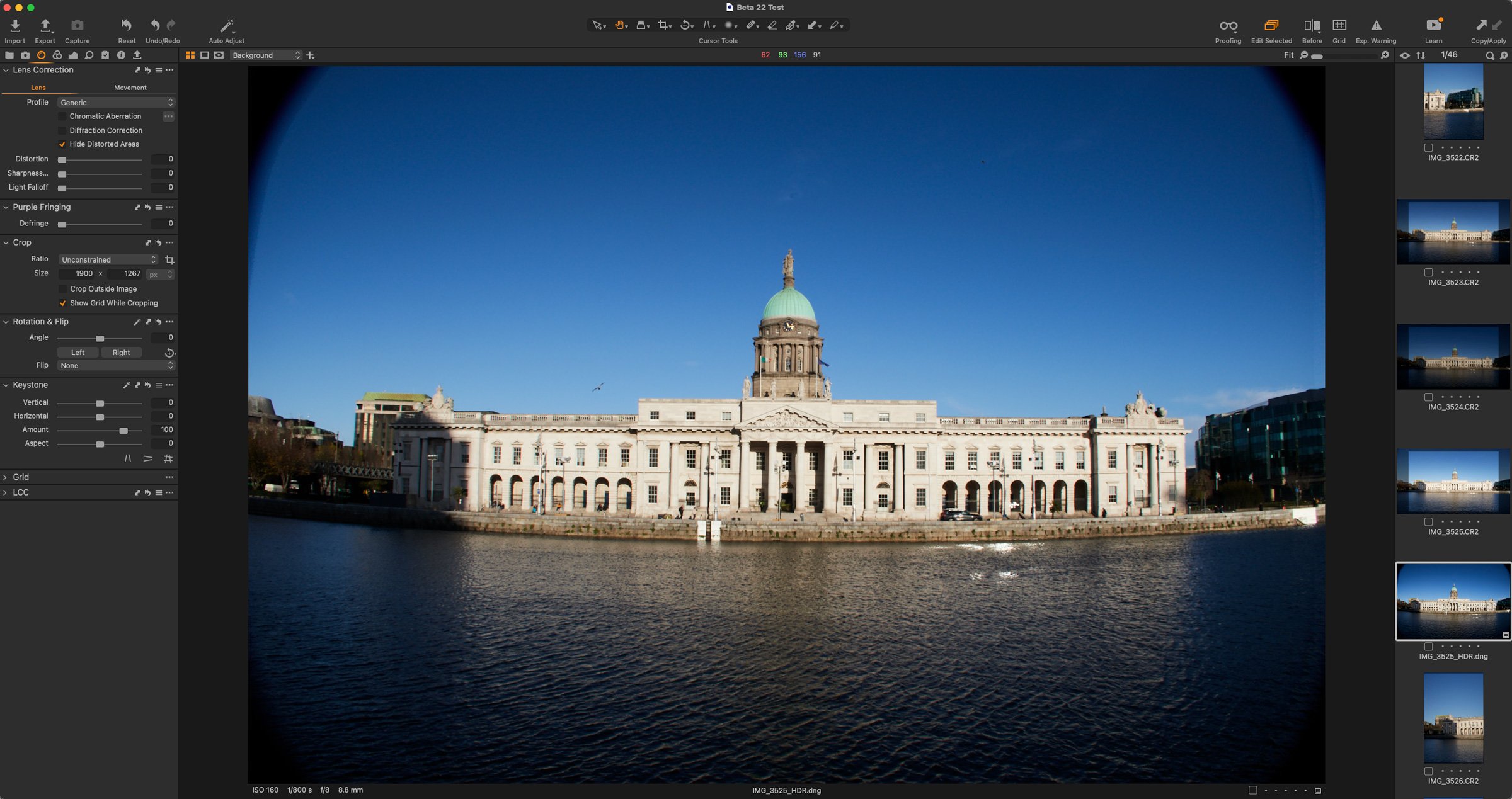

If you checked auto adjustments in the merge dialog, these will have been applied if not, you can do it now. Edit the merged imageĬapture One will now merge those images into a single extended dynamic range DNG file. There are no complicated previews, key frame selections, ghosting, or chromatic aberration options here, just two checkboxes: Auto Adjust (it doesn’t matter, you can do it later) and Auto Align (definitely check this if you shot your bracketed set handheld). With the images selected, right-click and use the Merge to HDR… menu option.

#Merge to hdr capture one pro 12 series#
You also have to make sure (obviously) that the images you select are part of the same exposure series and will align. Unless this changes in a future update, JPEGs won’t work.

The key thing to note here is that Capture One will ONLY work with RAW files. It’s a simple three-step process that produces a fully-editable DNG file.

So how does Capture One 22’s HDR merge feature work and are the results any good? Let’s take a look. Instead, they produce a very natural looking image with extended dynamic range – which is often what most photographers want. What’s different about the Lightroom and Capture One approaches is that they’re not trying to create a dramatic and obvious HDR effect. Now Capture One 22 joins the HDR club, adding an HDR merge very much like Lightroom’s, which takes a series of exposures, aligns and merges them to produce a single high dynamic range DNG file. Photoshop has HDR merge capability (of a sort), Affinity Photo has an excellent tone mapping (HDR) workspace and Lightroom can merge HDR images, and ON1 Photo RAW has HDR merge too. Increasingly, though, HDR merge tools are being built into mainstream programs.
#Merge to hdr capture one pro 12 software#
These programs still exist, including Photomatix, one of the oldest and best known, Aurora HDR from Skylum Software and the HDR Efex Pro plug-in from the DxO Nik Collection. Once upon a time you needed specialist HDR applications and plug-ins to align and merge multiple exposures of the same scene to produce an HDR composite. It’s solid and fast.Capture One 22 brings an HDR merge feature that quickly combines several exposures into a single fully editable DNG file with extended dynamic range. C1 has been for pros from the start (it was originally written to use with Phase One medium format equipment, and the industrial grade approach remains). That and the sluggishness when going through many images have made me use it less. Their development style has been implement features first, debug later. On1 is a newer package that’s been targeted at consumers and only recently marketed to pros and demanding enthusiasts. If you want prepackaged “looks” that’s also something On1 is good at. On1’s real power comes from its effects - filter simulations, dynamic contrast, sunlight filter, etc. So I find C1 best at natural renderings - exposure, highlights, shadows, a bit of split tone, clarity, CA and distortion correction (and film mode for Fuji) and you can end up with a great result. C1 is usually the best thing at high quality raw conversion, and if you happen to have a Fuji you’ll see much better detail in C1. On1 has a built in hdr maker that’s very good, and makes panos and focus stacks easy C1 doesn’t. There is also the option to catalog folders for faster loading and searching but this is slow too so you probably only want to catalog your most recent folders. But this approach does make the software feel slow, because it’s always re-rendering images from raw. So if you want to take the file to another computer you copy the sidecar file and it loads like you think it should. When you go back to the same file, On1 renders the edits again using the sidecar as instructions. In On1 you’re using their file browser to browse the files in place, and when you make edits they’re saved in a “sidecar” file, which is a file with the same name as the original and a different extension that goes in the same place. The main file handling difference is that in C1 you’re still importing folders of images (originals are left in place, previews and edits are added to your C1 catalog folder what you see in the C1 browser panel is the folder structure on disk and if you move the files there’s a function to provide the new location in the C1 browser). I’ve spent a lot of time with both On1 2018 and C1 and I’m willing to talk about them and not Lightroom.īoth of them let you keep the images in a regular folder structure.


 0 kommentar(er)
0 kommentar(er)
